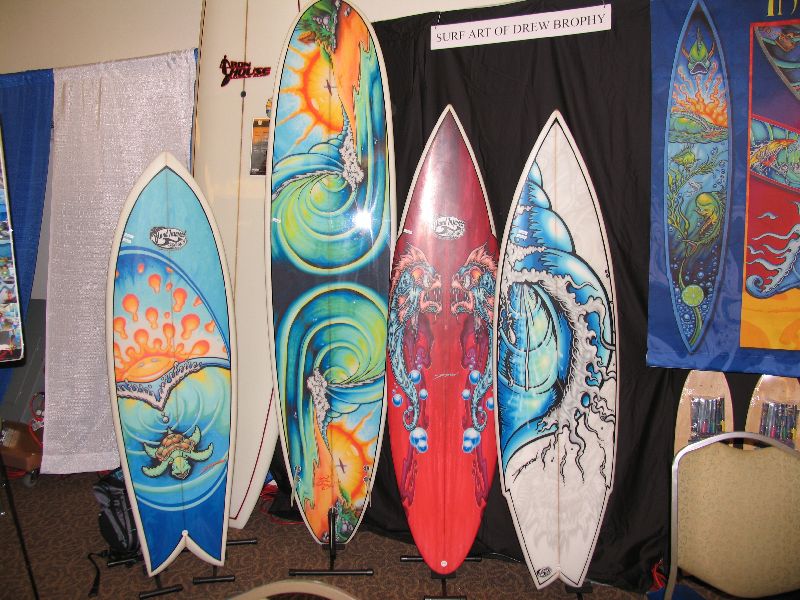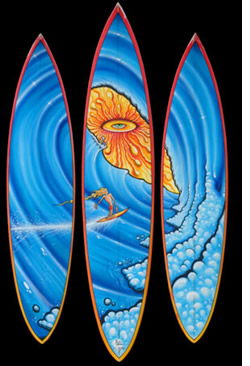Modern surfboards are usually built using polyurethane that is covered with layers of fiberglass cloth and epoxy/polyester resins. The intent is to make the board lightweight, strong, and waterproof. The design has rails around the edge of the board and fins located on the bottom. These are to cut through the water and to aid in steering the board. They also minimize on side slipping, which is due to Newton’s First Law which states that once the surfboard is in motion, it tends to stay in motion. This is counterproductive when you want the board to turn 180 degrees it wants to continue moving strait. The fins counteract the hydrodynamic forces pushing sideways upon them and consequently twist the board until these forces are neutralized and the board is heading in the right direction.
There are typically two types of boards, short and long boards. Due to the physical laws of motion short boards are typically more agile due to a shorter distance between the force applied by your feet and end of the surfboard being twisted. When on a long board, the same twist (torque) will cause the surfboard to react in a similar way but the motion will be slower. The Moment of Inertia of a long board is greater than that of a short board.
Torque (T) = Force (F) * Distance (D)
A longboard, however is faster than a short board for paddling and are usually easier to learn on. This concept is the same for boats, the longer the hull length, the faster the overall speed.


